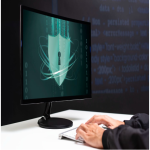Development of SaaS (Software as a Service) solutions depends
much on a multi-tenant environment. It lets many users—or “tenants”—use the
same program with a shared architecture but with separate settings, data, and
interfaces. Let us define what is multi tenant SaaS,
its characteristics, and main development considerations by Acropolium.
Main ideas and advantages of a multi-tenant SaaS system
In SaaS, a multi-tenant setup is wherever all users of the
program share a single instance yet their data and settings stay separated.
Every client in conventional single-tenant systems has their own instance of
the application and database. Under a multi-tenant arrangement, every user
works in one environment, therefore greatly lowering infrastructure expenses
and streamlining management.
Advantages of a
multi-tenant SaaS system
1. One instance of the
program and database helps all customers, therefore lowering the infrastructure
maintenance expenses.
2. All users get
updates and new features at the same time, therefore saving the need for unique
upgrades for every client.
3. Scalability:
Without major infrastructure expansion expenses, the multi-tenant concept lets
you easily add more customers.
4. From one single
control panel, managers of all users and their settings may handle them all.
Characteristics of
establishing a multi-user SaaS system
Designing a multi-tenant SaaS architecture calls for a unique
strategy as it is required to consider many elements connected to security,
performance and system adaptability. Therefore, it is better to entrust it to
Acropolium professionals.
1.
Isolation of Data
The safe separation
of consumer data is one of the key difficulties. Every tenant’s data must
remain segregated and unreachable to other users even with the shared database.
There are various ways one may do this:
·
Separation by physical means. Separately keeping databases for
every customer. Though least costly, this is the most safe method.
·
Logical partitioning is data separation based on distinct tenant
IDs housed in a same database. Because of its adaptability and resource
savings, this approach is increasingly typical in multi-tenant SaaS
applications.
2.
Personalization
Clients should be
able to adapt the system to their requirements notwithstanding the overall
design. This might call for altering business logic, merging with other
services, and redesigning the interface. Development of modules that let every
client store their own settings is essential to apply flexible customizing.
3.
Scalability
The system has to
remain high performing as user count rises. These components are quite
important:
a.
Balance of loads. To equally divide client demands to servers.
b.
Horizontal scalability. The capacity to add more servers to the
system as the demand rises.
c.
Database maximization. Increasing data working speed by means of
indexing, cache, and other techniques.
4.
Compliance and
security
Data security takes
front stage in a multi-user scenario. Apart from conventional security methods
like authentication and encryption, one has to consider:
a.
Access management. Restrain user permissions based on their
responsibilities and degree of access.
b.
Tracking and noting. Recording user events and tracking unusual
behavior to stop data breaches.
c.
Regulatory compliance. Laws including GDPR (EU) or CCPA
(California) may be relevant depending on the area your SaaS application runs
over.
5.
Model of
multi-tenant pricing
Flexible prices are
made possible by the multi-tenant SaaS architecture. Here are several
possibilities:
a.
One-price. To get the capability, all users pay the same fee.
b.
tie-red price with many tiers. The cost is determined by the
degree of services rendered—that is, basic, premium, etc.).
c.
Customers pay for certain tools they use, like data storage,
amount of queries, etc., pay-per-use.
6.
Modular
notifications
Developing a multi-user
environment requires giving the capacity to add modules and new features
without upsetting the system. A microservices design lets updates be carried
out in phases and tested on a small sample of users, hence enabling this.
In summary
Offering flexibility in design, resource savings, and simplicity
of scalability, a multi-tenant SaaS system is an effective architecture
allowing many customers to be serviced concurrently. Development of such
systems that are successful calls for thought on data segregation, security,
customizing, and resource management. Multi-tenant systems, encompassing a
broad spectrum of sectors and business models, are becoming more and more
common as cloud-based SaaS solutions acquire greater appeal.











